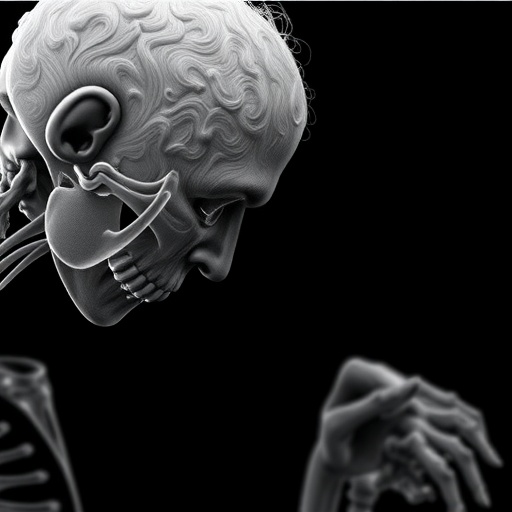A groundbreaking study has recently unveiled critical insights into the intersection of sarcopenia and mortality rates among octogenarians in New Zealand, drawing stark comparisons between Indigenous and non-Indigenous populations. Conducted by a dedicated research team led by Moyes, Selak, and Plank, this comprehensive investigation forms part of the larger LiLACS NZ cohort study, aiming to delve into the aging process and its myriad effects on health outcomes within diverse demographic contexts. The research scrutinizes how muscle loss, a common challenge associated with aging known as sarcopenia, not only affects physical capabilities but also bears significant implications for survival rates in older adults.
Sarcopenia, defined as the progressive loss of skeletal muscle mass and strength, has emerged as a pressing concern globally, especially as populations age. The focus on New Zealand offers a unique perspective, considering the distinct cultural and health backgrounds of the Indigenous Māori and non-Indigenous Pākehā communities. The study emphasizes the necessity of addressing public health strategies tailored to the specific needs of different ethnic groups, particularly in light of the growing evidence linking sarcopenia to increased mortality risk.
A total of 1,000 participants aged 80 and above were included in the study, representing a diverse demographic landscape. Researchers utilized a variety of assessment methods to evaluate muscle mass, strength, and functionality, alongside a comprehensive analysis of participants’ health histories and demographic information. This multifaceted approach not only reinforced the robustness of the findings but also illuminated the prevalence of sarcopenia across different cultural contexts, laying bare the disparities faced by Indigenous elders.
Initial findings revealed a striking prevalence of sarcopenia among Māori participants compared to their non-Indigenous counterparts. This discrepancy points to broader systemic issues, such as access to healthcare, nutrition, and social support systems, that disproportionately affect Indigenous populations. The researchers argue that addressing these disparities is imperative to enhance health outcomes and reduce mortality risks associated with sarcopenia in older adults.
The study found that sarcopenia significantly correlates with increased mortality, with Indigenous participants showing a higher risk. This underscores the critical need for targeted interventions aimed at preventing muscle loss and promoting strength in older adults, particularly within high-risk groups. By identifying the links between muscle health and survival, the research advocates for the implementation of community-based programs that prioritize physical activity and nutritional education among the elderly.
In addition to its focus on sarcopenia, the research highlights the necessity of culturally competent healthcare practices. The authors argue that understanding the unique cultural factors influencing health behaviors and outcomes is essential for developing effective interventions. For instance, traditional Māori practices related to diet and physical activity could be leveraged to create culturally resonant wellness programs tailored specifically for Indigenous elders.
This study serves as a clarion call for policymakers and health practitioners alike to prioritize muscle health in aging populations. With the prevalence of sarcopenia set to rise as global demographics shift towards an older population, immediate action is warranted. The findings call for a reevaluation of healthcare strategies, emphasizing a holistic approach that incorporates both physical and cultural dimensions into care delivery.
Moreover, the implications of this research extend beyond New Zealand’s borders. As aging trends are observed worldwide, the lessons drawn from this study can inform global practices regarding elderly care. The intersectionality of ethnicity and health among older adults is a critical consideration that must be integrated into public health frameworks. By fostering an understanding of the unique challenges faced by diverse populations, health systems can enhance care equity and improve outcomes for all seniors.
The forthcoming publication in the European Geriatric Medicine journal encloses hopes that these findings resonate within academic circles and influence future research. The authors encourage other researchers to explore the complex relationships between ethnicity, muscle health, and mortality in various cultural contexts. By expanding the dialogue around sarcopenia, the academic community can contribute toward an enhanced understanding of aging and its diverse manifestations.
To effectively combat sarcopenia, the authors recommend not only preventive measures but also the integration of rehabilitation programs that focus on strength training and nutrition. Evidence suggests that resistance training can substantially improve muscle mass and reduce the risk of falls, which is particularly pivotal for older adults facing mobility challenges. Further, engaging social support networks within communities can foster adherence to exercise regimens, making muscle health a collective priority rather than an individual struggle.
Ultimately, the study by Moyes et al. paves the way for a nuanced discourse surrounding sarcopenia and its implications. By addressing the cultural, social, and biological dimensions of aging, healthcare professionals can develop strategies that resonate within varied communities, improving the quality of life for aging populations. As the study highlights, the intersection of health and identity is profound, and it is through understanding these complexities that effective, compassionate healthcare can be realized.
Through collaborative efforts between researchers, healthcare providers, and community stakeholders, there is a promising path forward. Empowering older adults with knowledge about muscle health, providing access to resources, and fostering culturally appropriate practices can create a sustainable environment for improvement. Awareness campaigns and educational programs can facilitate a broader understanding of the importance of maintaining muscle health as we age, ultimately contributing to healthier, longer lives for all seniors.
In conclusion, the alarming connections between sarcopenia and mortality amongst New Zealand’s octogenarians invite urgent attention. The findings call for a comprehensive reevaluation of how society perceives aging and health. With a proactive approach to understanding muscle health—rooted in culture and community engagement—they hold the potential to shape future policies and initiatives that benefit aging populations significantly. The spotlight is now on health systems to embrace these findings and drive change that addresses the root causes of health disparities among Indigenous and non-Indigenous elders alike.
Subject of Research: Sarcopenia and mortality in Indigenous and non-Indigenous New Zealand octogenarians.
Article Title: Sarcopenia and mortality in Indigenous and non-Indigenous New Zealand octogenarians—the LiLACS NZ cohort study.
Article References:
Moyes, S.A., Selak, V., Plank, L. et al. Sarcopenia and mortality in Indigenous and non-Indigenous New Zealand octogenarians—the LiLACS NZ cohort study. Eur Geriatr Med (2025). https://doi.org/10.1007/s41999-025-01261-5
Image Credits: AI Generated
DOI:
Keywords: Sarcopenia, mortality, octogenarians, Indigenous health, New Zealand, aging, muscle mass, public health.
Tags: aging and muscle loss in older adultsaging population and mortality riskcomprehensive studies on sarcopenia in New Zealanddemographic impacts on aging researchethnic differences in sarcopenia effectshealth outcomes in Māori populationsIndigenous vs non-Indigenous health disparitiesLiLACS NZ cohort study findingsNew Zealand elderly health challengespublic health strategies for sarcopeniasarcopenia and mortality in octogenariansskeletal muscle mass and survival rates





